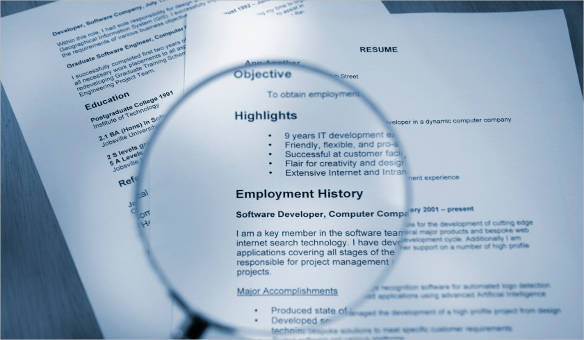Knowledge of the format of a resume is an advantage if you are looking into creating your own resume. Knowing the dos and don’ts can help you make an impressive one. Resumes should only include important information about you that the company needs to know. They are your name, age address, religion, educational background, and employment history to name a few.
In this article we will give you guides to create your own resume. These guides will help you improve on your resume writing so that you can come up with an impressive and the best resume for that dream job.
Resume Formatting Guidelines
A resume should look neat and professional. This is a key ingredient so that your resume will be noticed by the employer or the company that you are applying for. To help you make your resume look neat and professional, you should follow these formatting guidelines and tips for effective resumes. You can also take a look at our cover letter templates.
- The margin that you use for your resume should be the same for all sides or it should be consistent. It will give your resume a nice framed look. Resumes usually have one-inch margins.
- Your resume should not look crowded because it may look scary and unimpressive. It is also possible that important information may be overlooked because information overloading.
- You can use a single spacing or double spacing in between the lines in your resume.
- Use a text style and text font that can easily be read to make it look professional. It is advisable to choose traditional fonts, like Times New Roman in font size 10 or Arial in font size 10. The acceptable font size is between size 10 to 12.
- The ideal length of a resume should only be up to 1–2 pages. It should be detailed yet brief and concise.
- Your format should be consistent throughout your resume.
Information to Include in Your Resume
- A resume should contain your contact or personal information such as:
- Name
- Address
- Professional email address
- Phone number or cell phone number
- Personal website, if you have any
- It should also contain a statement about your objective. It is usually a one-liner objective. Avoid using generic objectives as this may make your resume look like a copycat.
- Provide your educational background. There are companies who are particular about the school where the applicant graduated, thus this is one way to make an advantage. You may only include the college or university where you graduated.
- Use a summary statement in place of an objective statement. Here you can tell them about your qualifications that makes you a perfect fit for the job.
- Include your employment history. This is also another set of information that employers will check in every applicant’s resume. This will tell them if you have work experience and in what field. This will also serve as reference when they do background checks.
You may find resume objective examples and best resume examples useful.
Related Posts
Sample Nursing CV Templates
Sample Warehouse Worker Resume Templates
Sample Nurse CV Templates
Sample Resume For College Student
Resume Summary Templates
Medical Student CV Samples & Templates
Fresher Resume Examples
Resume Profile Samples & Templates
Sample High School CV Templates
Sample Resume Templates
Sample Teaching CV Templates
Teacher Resume Templates
FREE 15+ Director CV Samples in MS Word | Pages | PSD | Publisher | PDF
FREE 10+ Sample MBA Resume Templates in MS Word | PDF
FREE 9+ Sample Pharmacist Resume Templates in PDF
